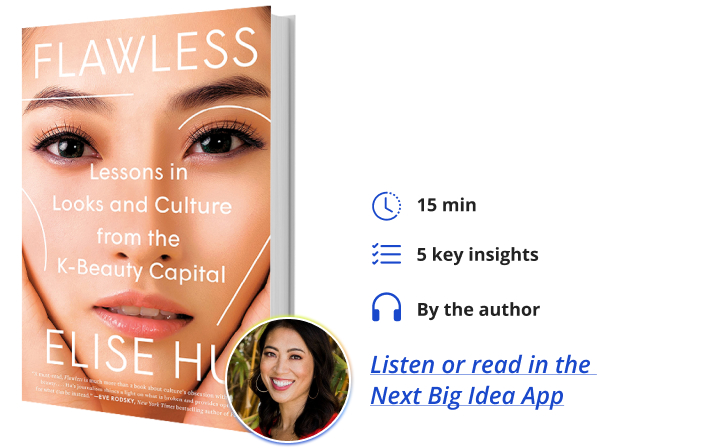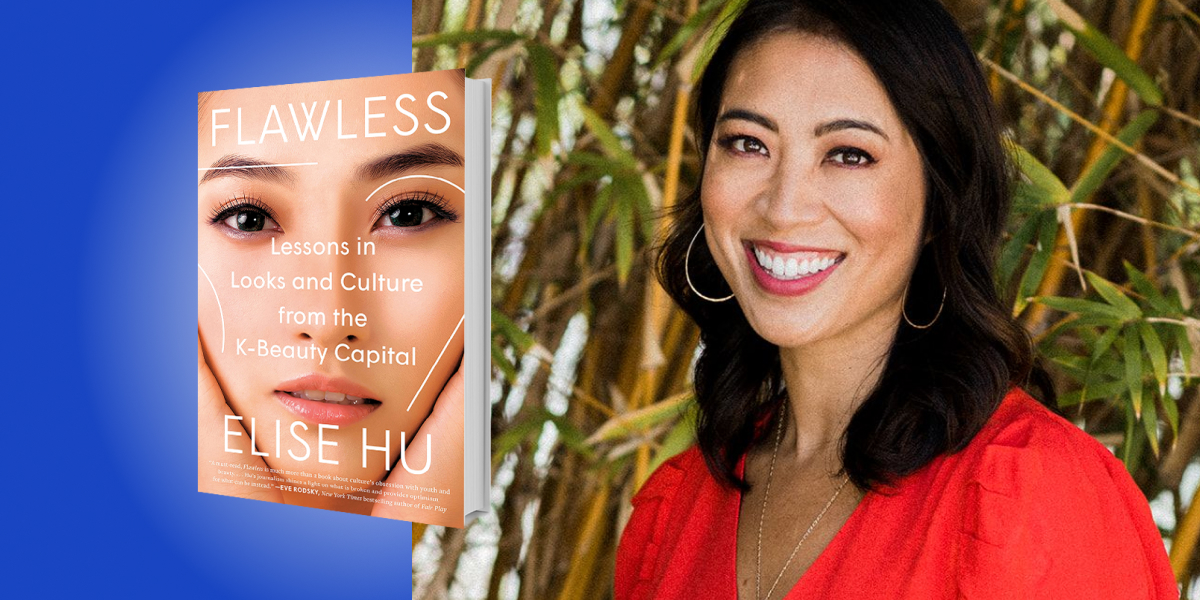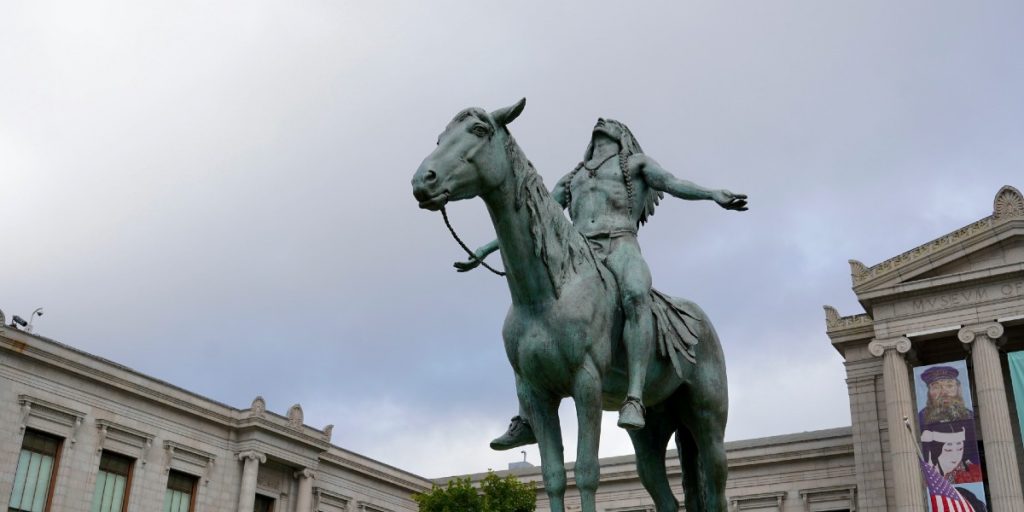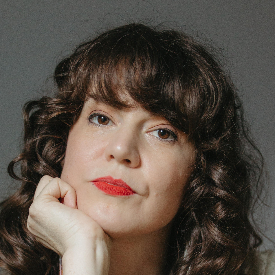Elise Hu is a journalist and podcaster with NPR and the host of TED Talks Daily.
Below, Elise shares 5 key insights from her new book, Flawless: Lessons in Looks and Culture from the K-Beauty Capital. Listen to the audio version—read by Elise herself—in the Next Big Idea App.

1. South Korea is the dynamic epicenter of global beauty.
When I think of South Korean exports, my brain goes to Samsung phones, LG TVs, and cars from Kia or Hyundai. But one of the most powerful South Korean exports is culture: K-pop, K-drama, and Korean film. The global transmission of K-culture has meant an always-on advertisement for Korean beauty ideals and the skincare products Korea makes for pursuing that ideal. South Korea’s exports of cosmetics have surpassed its exports of smartphones. The K-beauty industry is projected to be worth $13.9 billion by 2027, and Seoul leads the world in plastic surgery rates. South Korea has more plastic surgeons per capita than any other place on the planet and has the most advanced and developed market for changing our faces and bodies for cosmetic reasons. No other country comes close.
On the product side, South Korea boasts more than 8,000 cosmetics brands, which is huge for a country that can fit in the space between Los Angeles and San Francisco. The competition means K-beauty companies are constantly exploring new ingredients (mugwort, bee propolis, shark liver oil, for example) and coming up with creative packaging, churning out new lines and brands and products faster than competitors in the US and Europe. These days, both Korean women and men are a testing ground and a springboard for innovation.
2. There are four global beauty pillars.
We all aspire to four basic pillars of external beauty, according to researcher and philosopher Heather Widdows, whose work undergirds much of my book. The standards are thinness, firmness, smoothness, and youth.
“The K-beauty industry is projected to be worth $13.9 billion by 2027, and Seoul leads the world in plastic surgery rates.”
The body positive movement and increased cultural discourse have possibly widened the standard on one aspect—say, thinness or youth—while the other ideals remain firmly fixed. For example, you may have noticed more size diversity in shop signage and Victoria’s Secret models. But just as fatphobia is becoming taboo, we’re using the negative language that used to malign cellulite or fat rolls to hold up another beauty pillar—smoothness. Advertising that says something like “get rid of unwanted belly fat” sounds awful. But somehow, it’s not tacky to advertise by saying, “get rid of those unwanted creases in your face.” As one global beauty pillar gets more expansive, another pillar stays fixed or narrows.
3. The technological gaze makes appearance pressure more pronounced.
Korea is one of the world’s first fully wired societies, and ground zero for making digitally enhanced avatars a reality. You can graft online effects onto flesh-and-blood faces. This leads the way in showing what new standards the metaverse might inspire, as well as the questions and concerns about those possibilities.
Providers are perfecting injectables and surgeries to change the physical body, offering biomedical and other innovative ways to smooth skin or transform body parts to fit standardized beauty ideals. A futuristic South Korea shows that two kinds of technology—the visuality that increases self-objectification, and self-improvement innovations—work together to create a twist on the old notion that women are subject to a male gaze. The new gaze is an internalized “technological gaze,” a self-policing, narcissistic, machine-driven perspective we use to judge ourselves and others.
“Technological improvements increase expectations to look better.”
Whether it’s the stream of visuals we see on social media, the latest AI-generated filters, or off-label uses of salmon DNA injectables, technological improvements increase expectations to look better, the options we have to “upgrade” appearance through products and procedures, and our judgment of one another based on appearance.
4. Beauty culture requires unpaid labor—but we can interrogate that investment.
The number of resources we devote to grooming, primping, nipping, and tucking our way toward aspirational physical ideals is extraordinary, and yet so easily shrugged off as part of daily life. We should remember that it is a lot of work and it’s labor we pay to perform. These days you can get injected, give yourself at-home light facials, or purchase laser therapies of all kinds. That’s all costly in terms of energy and money and time—with time being a key lever of our freedom.
We can interrogate our investment in beauty work (in the same way people are questioning the demands of their jobs) and remap our relationship in a way that is less draining and anxiety-inducing. We are not responsible for tamping down the prevalence of appearance standards at a societal level, but we can turn down the volume in our own heads and connect with one another in ways that don’t prioritize external appearances. These choices can have a ripple effect.
“We can turn down the volume in our own heads and connect with one another in ways that don’t prioritize external appearances.”
In Korea, this can mean loving your body like older women often referred to as ajummas. In a culture largely convinced that an individual’s looks determine their value, Korean ajummas care for their bodies in old age in a way that’s communal and about spiritual beauty. Their wisdom on how to meaningfully care for our faces and bodies can be applied to all generations.
5. Progress looks like opting out of beauty culture and not paying a price.
We should strive toward a society in which we are less defined by external beauty. Even though the demands of beauty culture require resources, there are enormous social and economic costs to opting out. For example, hundreds of thousands of South Korea’s women banded together in 2018 to start the Escape the Corset movement, in which they crushed their compacts, cut off their hair, and stopped wearing makeup, taking part in a general strike against aesthetic labor. Many of them lost their jobs and faced criticism and rejection from their families.
Progress doesn’t have to be marked by technological advances and product innovations. Instead, we could see progress as true bodily autonomy and the ability to appear in the world as we want to—and ultimately, for our external appearances not to matter much at all. To get there, change needs to happen on a wider, cultural scale but that doesn’t mean we can’t be changing in our own homes. It means appreciating our bodies for what they can do and feel rather than what they look like. It means tamping down the scripts that link appearance with worth. Even in the process of writing this book, I have grown in letting myself off the hook and breaking these entrenched ideas that I’m more worthy the better I look. Imagine the freedom and power that could be unleashed if all of us let go of the notion that we need fixing and instead showed up as our full, flawed, and still worthy selves.
To listen to the audio version read by author Elise Hu, download the Next Big Idea App today:































